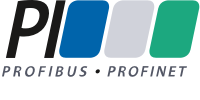Following its major success last year, the Get Together for Robotics conference was held today once again. Accompanied by a large number of online participants, around 100 participants from 39 companies met in Erlangen, Germany, to promote cross-organizational standardization in robotics. Besides robot experts and PLC manufacturers, the event was also attended by startups and customers this time.
In addition to discussions on the easier use of robot applications and their standardization, the event was topped off with a round table discussion by CEOs from the industry on the topic of standardization and the future of robotics. Round table participants Peter Howard (President, CEO & Co-Founder of Realtime Robotics, Inc.), Rainer Brehm (CEO of Factory Automation at Siemens AG), Ujjwal Kumar (Group President of Teradyne Robotics) and Xaver Schmidt (Chairman of PROFIBUS & PROFINET International) discussed current market trends and their visions for future development of the market. Topics such as flexible production and the associated increasing use of AI-supported and skill-based solutions, as well as cobots and AGVs for reducing engineering and maintenance costs, among other things, were the focus of this discussion. Standardization—the SRCI in particular—is also playing a decisive role in this context.
Around two years ago, work began on the standardized data interface SRCI (Standard Robot Command Interface) at PI (PROFIBUS & PROFINET International). With this interface, robot programs can be written entirely in the PLC by calling up the robot functions and having the required robot status information be fed back to the PLC. “With the SRCI, we solved an urgent problem in the industry,” emphasized Xaver Schmidt, Chairman of PI. “The interface is the basis for the easier use of robots and therefore more flexible production.” Initial practical experience with the new interface is already proving to be impressive. It has been shown that considerably less detailed knowledge about the respective robot manufacturers and the handling & functional scope of the hand-held robot control unit was required. Both costs and the time required were reduced dramatically.
In the meantime, five manufacturers have already introduced products with this interface to the market and seven more with corresponding offerings will come out in the next eight months. “This makes up 75 percent of the market. In 2024, we will see a lot more exciting developments around the SRCI,” said Schmidt. “We’re convinced that this standardization is serving as an enabler for opening up lots of new applications and markets.”
The Get Together for Robotics was organized by PI (PROFIBUS & PROFINET International). During the standardization process, however, cooperation was carried out with PLCopen (motion control) and the VDMA/OPC Foundation (VDMA OPC Robotics Initiative), among others. While PLCopen is concentrating on revising “Motion Control – Part 4,” for example, members of the PI Working Group are contributing with work revolving around the SRCI. At the same time, cooperation with the VDMA OPC Robots Working Group is underway. With this, cross-organizational and global harmonization in robot programming is being promoted.
Statements Roundtable Participants:
Rainer Brehm (CEO of Factory Automation at Siemens AG):
„We have been observing among our customers, that skill-based and easy-to-use robotics as well as their seamless integration into the PLC will play an increasingly important role in maintaining their competitiveness in the industrial market. That is why we have made it our mission to work on solutions based on the Standard Robot Command Interface (SRCI) and AI-Technology that significantly reduce the development and operating costs of industrial robots for our customers."
Peter Howard (President, CEO, Co-Founder, Realtime Robotics, Inc.):
„We at Realtime Robotics believe that a host of technologies and tools are now being released that dramatically simplify robotic system deployment, and dramatically improve their throughput and economic viability: from robots that are easy to manually teach, to handheld tools that make teaching easy, to standards and platforms that reduce programming complexity, to software tools that automate and optimize the programming of complex multi-robot systems, removing the need for teaching at all. The new age of robotics in industrial automation is in fact here and now."
Ujjwal Kumar (Group President of Teradyne Robotics):
„At Teradyne Robotics, which comprises market-leading companies Universal Robots and MiR, we are excited to actively participate at “Get Together for Robotics”. We firmly believe that the “easier use of robots” will accelerate market adoption and ensure that the promise of wide-scale automation becomes a reality. We are firmly committed to supporting SRCI and introducing this interface to the market in early 2024.”

